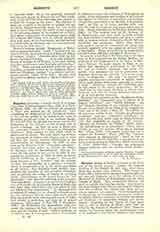

Bonosus, Bishop of Sardica, a heretic in the latter part of the fourth century. Against the common teaching of the Church he held that, after Jesus, Mary had several other children. The Council of Capua (391), before which the matter was brought, did not pass any judgment on it, but referred it to the Metropolitan Anysius of Thessalonica and the other bishops of Illyria. They condemned Bonosus and tried to exclude him from his church. In a letter to the same bishops Pope Siricius approves the sentence and also condemns the opinion that Mary did not always preserve her virginity. Notwithstanding his condemnation, and the prudent advice of St. Ambrose to submit, Bonosus continued to exercise the episcopal functions, to consecrate bishops and ordain priests. According to two letters of Pope Innocent I, one to Martian of Naissa (409), and the other to the bishops of Macedonia (414), those ordained by Bonosus before his condemnation were to be received in the Church without a new ordina tion; those ordained since Bonosus’s condemnation, especially if they had themselves sought to be ordained by him, were to be deprived of their dignity. As Innocent speaks of Bonosus as no longer living, we may infer that he died at the end of the fourth, or the beginning of the fifth century.
Whether, besides denying Mary’s perpetual virginity, Bonosus also denied Christ’s divinity cannot be determined with certainty. But it is certain that his followers, the Bonosians, to whom we find references in the councils and in ecclesiastical writers up to the seventh century, denied this dogma. On this point they were at one with the Photinians. As a consequence, they affirmed the purely adoptive divine filiation of Our Lord. However, they differed from the Adoptionists in rejecting all natural sonship, whereas the Adoptionists, distinguishing in Christ the God and the man, attributed to the former a natural, and to the latter an adoptive sonship. The baptism conferred by the Bonosians was by some declared valid and by others invalid.
C. A. DUBRAY

